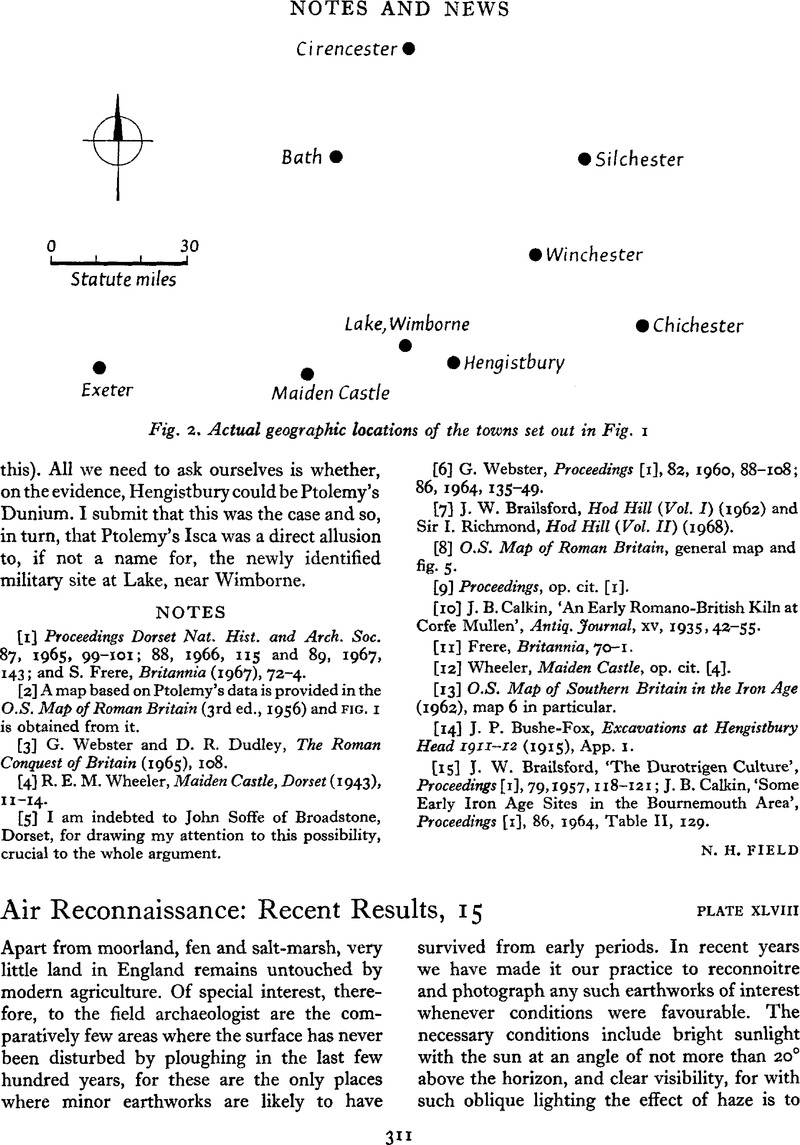No CrossRef data available.
Published online by Cambridge University Press: 26 May 2015

[1] Royal Commission on Common Land 1955–58: Report (HMSO, 1958), 229 Google Scholar. Minchinhampton Common, 450 acres (180 hectares), Rodborough Common, 240 acres (96 hectares).
[2] Burrow, E. J., Ancient Entrenchments and Camps of Gloucestershire (1919), 36Google Scholar, gives a list of earlier references.
[3] Crawford, O. G. S., Long Barrows of the Cotswolds (1925), 139Google Scholar.
[4] Clifford, E. M., Trans. Bristol & Glos. Arch. Soc., LIX, 1938, 287–307Google Scholar.
[5] Clifford, op. cit., 288–90; Field Archaeology, O.S. Prof. Paper N.S. 13, 4th ed. (1963), 66.Google Scholar Similar pits formerly occurred all over Selsley Common, 150 acres (60 hectares). The flat summit (SO 828030) of the Common was ploughed in the 1939–45 war and earthworks can now only be seen around the edge above the NNW-facing scarp.
[6] The delvings for chert at Pen Pits, Penselwood, Somerset, at Zeals, Wiltshire, and at Cole’s Pits, S of Farringdon, in Berkshire, where the pits are much deeper, are well known ( Crawford, , Archaeology in the Field (1953), 100–3Google Scholar). Alum has been obtained from the Upper Lias Clay in the cliffs near Ravenscar, on the Yorkshire coast, but medieval workings are obscured by the much more extensive eighteenth- century mining ( Arkell, W. J., The Jurassic System in Great Britain (1933), 181Google Scholar). Coal pits closely grouped along the outcrop of a seam have been recorded in terms of crop-marks SE of īnveresk, Midlothian. The coal was worked by the monks from Newbattle. Gypsum, in its massive form, alabaster, was obtained in the Middle Ages near Chellaston, in Derbyshire. Ochre, occurring in thin seams in the Wealden Beds, was dug, together with clay, in small-scale workings near Shotover, Oxon., and Brill, Bucks. ( Arkell, , The Geology of Oxford (1957), 129–32Google Scholar).
[7] This description is based upon vertical photographs (taken 8th April 1964), at a scale of 1 : 2,000, covering almost the whole of the two Commons. The features were examined later that year in company with Mr H. C. Bowen, who has kindly shown me his brief account of the earthworks written for the Prehistoric Society’s Bristol meeting, 1968: he has also read through this Note.